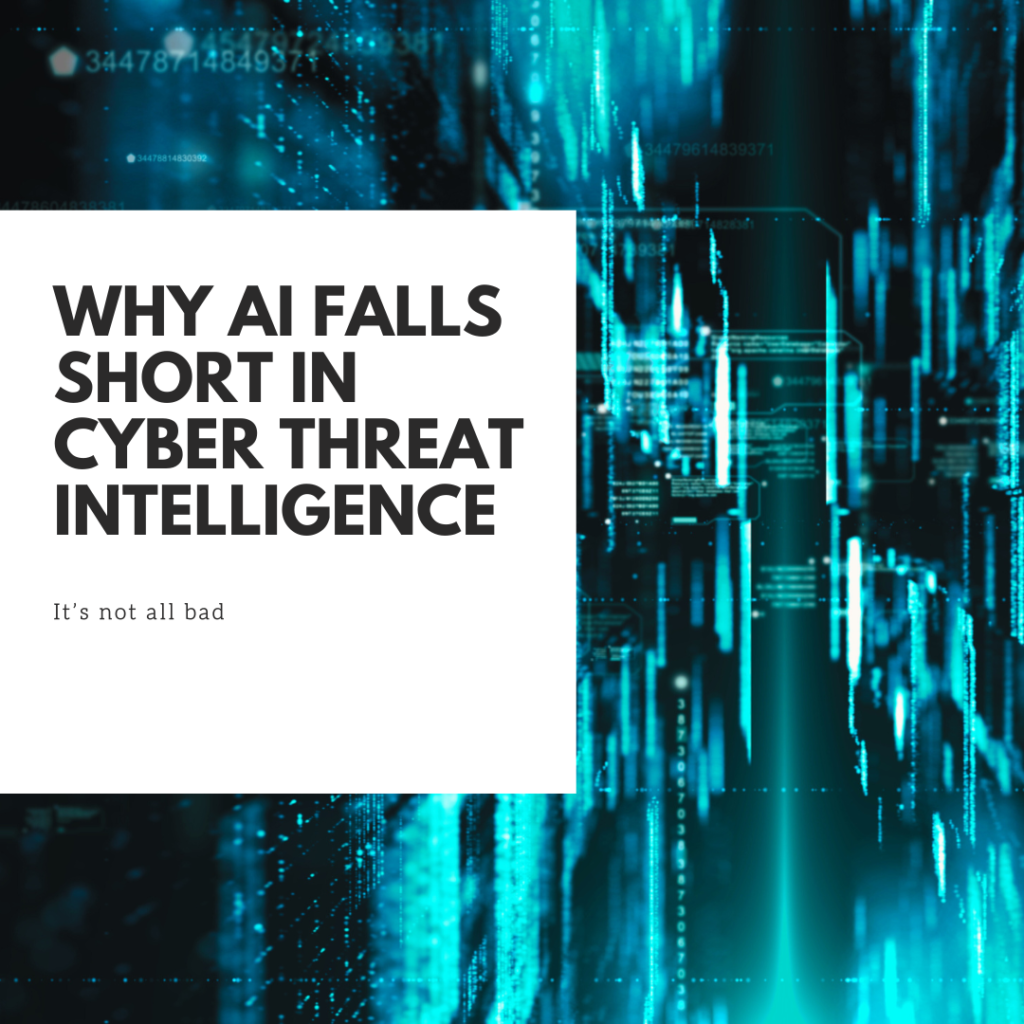Why AI Falls Short in Cyber Threat Intelligence

Why AI Falls Short in Cyber Threat Intelligence (And What We Can Do About It)
If you’ve spent any time in the world of cyber threat intelligence (CTI), you’ve probably heard the pitch: “Our AI-driven platform will detect threats faster, reduce analyst workload, and keep you ahead of the bad guys.”
It sounds great on paper. And to be fair, AI can help. It’s fast, consistent, and really good at crunching massive volumes of data. But here’s the uncomfortable truth:
When it comes to real threat intelligence — the kind that requires context, intuition, and strategic thinking — AI often flops.
Let’s break down why that is, and more importantly, what we should be doing instead.
Alert Fatigue – When AI Cries Wolf Too Often
AI is great at flagging anything that looks unusual. The problem? Most of it isn’t malicious. It’s just… weird.
Security teams everywhere are drowning in alerts. One study found that the average SOC only investigates about half the alerts it receives each day. The rest? Ignored, because teams don’t have the time — or they’ve simply stopped trusting the alerts.
This leads to what we call alert fatigue. If everything’s a priority, nothing is. Real threats get buried under a mountain of noise, and attackers know this. They count on it.
AI Doesn’t Handle New Tricks Very Well
Here’s the thing: AI is trained on what it’s seen before. But attackers are creative — they evolve, adapt, and come up with new ways to sneak past defenses.
Take the SolarWinds attack. Multiple AI-powered security tools completely missed it for months. It wasn’t until a human analyst noticed something weird that the breach came to light.
Why? Because AI didn’t know what to look for. It was a novel, stealthy, and highly tailored attack — the kind that doesn’t match any known pattern. And if there’s no pattern? AI’s blind.
Too Much Data, Not Enough Insight
Many CTI tools love to show off the number of indicators they collect: thousands of IOCs, hundreds of feeds, all piped into your dashboard.
But raw data without context is just noise.
A flagged IP might be a real threat… or it might just be an old Tor exit node. Without someone to enrich, validate, and triage the data, you’re stuck chasing ghosts.
More data doesn’t equal better security — it often means more rabbit holes, more dead ends, and more wasted time.
No Intuition, No Context
AI doesn’t read the news. It doesn’t understand geopolitics. It doesn’t know that a certain APT group tends to spike in activity during regional elections.
It doesn’t think — it calculates.
Human analysts, on the other hand, bring context. They recognize patterns across seemingly unrelated incidents. They know when something just doesn’t feel right. And they can make intuitive leaps that machines simply can’t.
The Solution? Humans + Machines, Not Humans vs. Machines
We’re not saying AI is useless. Far from it. AI is a powerful ally — when used the right way.
The real magic happens when you combine the speed and scale of AI with the context and insight of human analysts. Let AI handle the data crunching. Let humans make the judgement calls.
That’s the approach we take at ThreatInsights.
We use automation to gather, sort, and correlate threat data — and then our human analysts enrich it, validate it, and add context that only a person can provide.
The result? You get real intelligence, not just raw data. Fewer false positives. More relevant alerts. And a clearer picture of what’s actually going on.
Want threat intelligence that actually makes sense for your business? That’s what we do at ThreatInsights.
Let’s chat.
